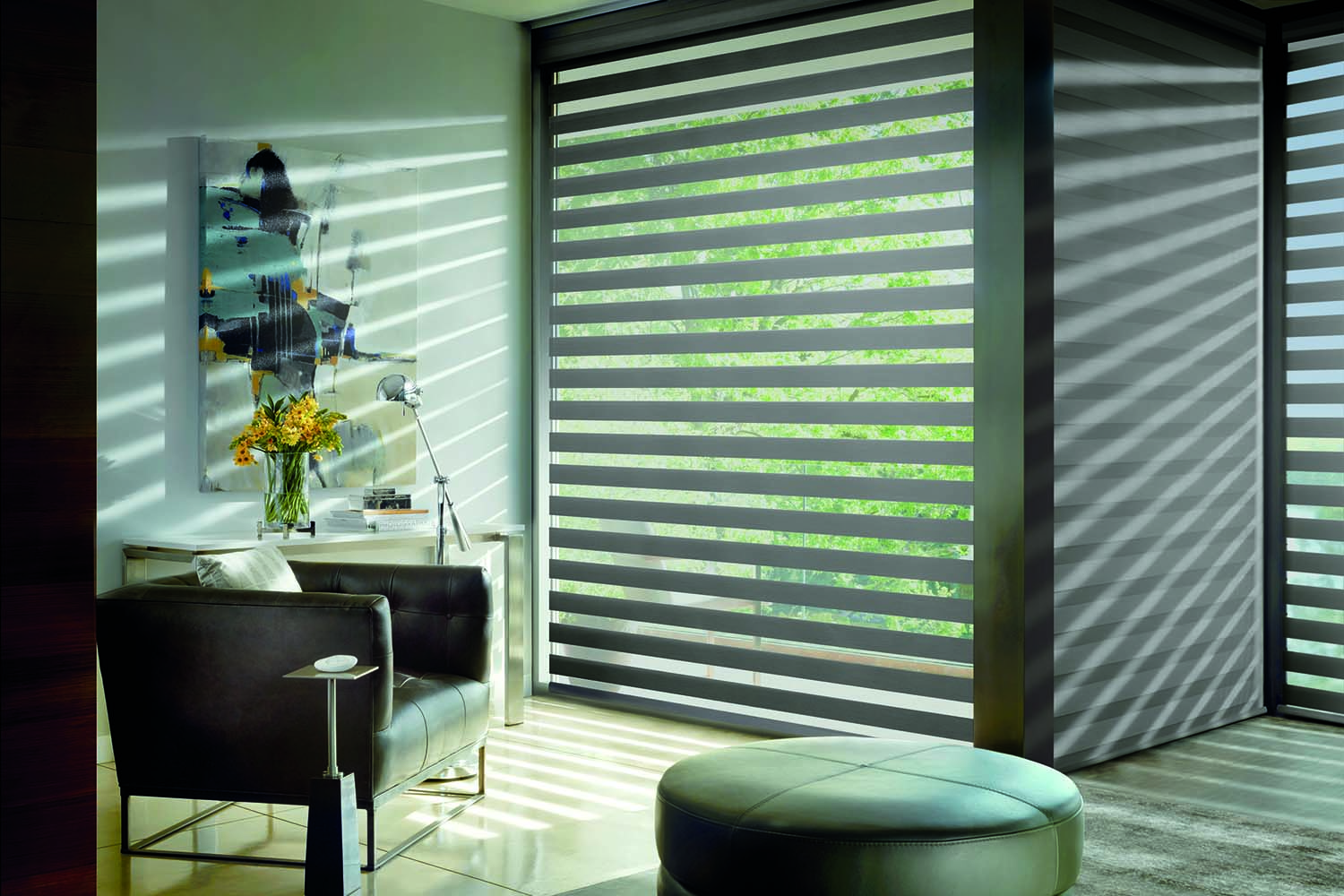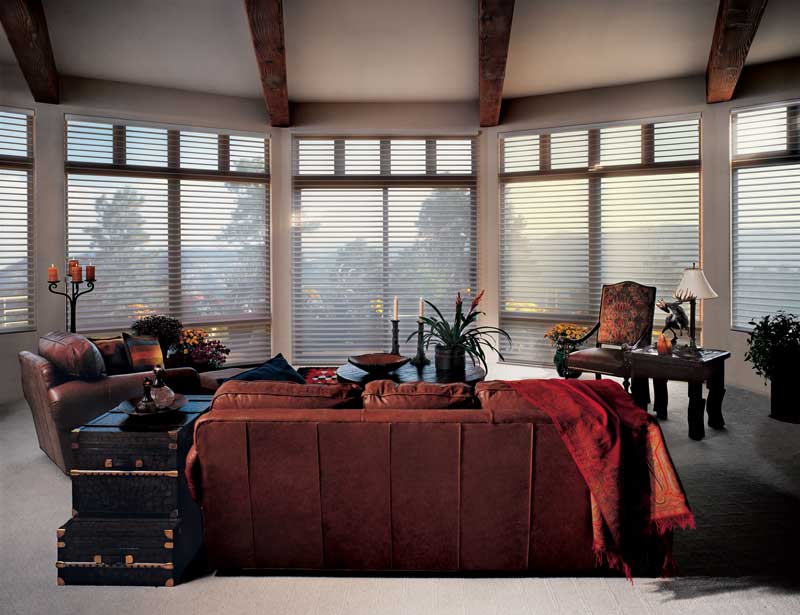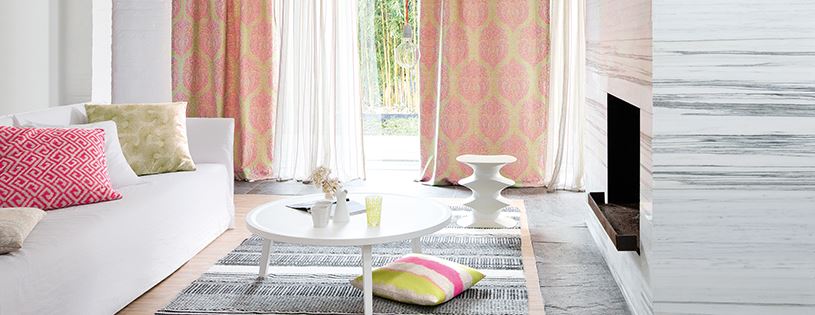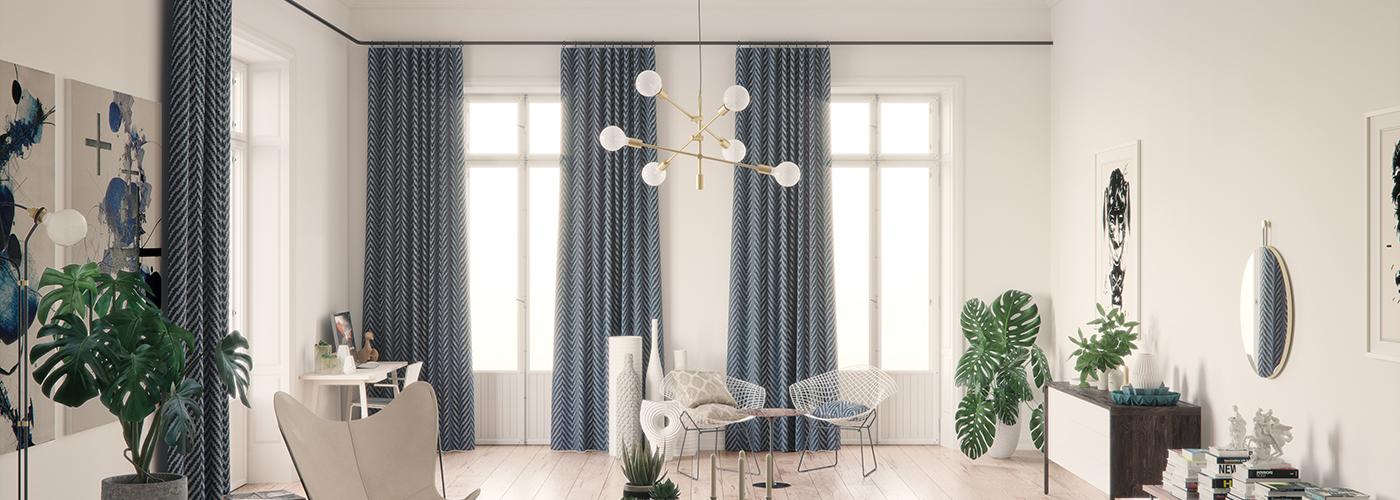Why be concerned about energy efficient window coverings?
There are 4 main benefits to using window coverings to increase energy efficiency.
-
Lowering your energy costs.
-
Cutting emissions into the environment.
-
Improved operating performance.
-
Increasing your asset value.
How much can I lower my energy costs?
About 50% of a homes energy consumption is used for heating and cooling to maintain a comfortable temperature. By conservative estimates 30% of that energy escapes through untreated windows. This can be greatly reduced by using coverings that are properly fitted to the windows. Exact savings depend on the type of attachment, the season, the climate and how the treatment is used. 75% of residential window coverings remain the same position every day. If this describes your home, then be strategic about the choice of covering selected based on the direction the window faces, and function of the room. As many of us are away from home during the day, we are not there to adjust the shades as the sun moves across the sky. Automation is another way to take advantage of natural energy.
Can this really help save the planet?
Energy efficiency is the least expensive way to reduce green house gas emissions (GGE). British Columbia has set a goal to reduce GGE to 33% below 2007 levels by 2020 and by 80% below 2007 levels by 2050. All energy savings contribute and collectively they can be significant. Beyond temperature regulation, some window coverings provide “daylighting” which reduces glare and draws diffused light deeper into rooms. This decreases the need for electric light during the day. By using window coverings to control energy flow, we reduce the need to purchase man made energy, saving resources and reducing GGE.
What does improved operating performance mean?
Essentially this is doing more with less. Terms to become familiar with include R-Value, U-Factor, Solar Heat Gain Co-efficient, Radiation, and Convection. It is important that to know for each term whether it is a higher or lower number that indicates improved performance. The terms below will provide you with the knowledge as to whether an increasing or decreasing number rating provides increased energy efficiency.
R-Value stands for thermal resistance value. This value describes how effective a material is at resisting heat flow by conduction. The higher the R Value, the slower the rate of heat transfer through the material. Glass for example, has a very low R-Value.
U-Factor is a measure of the rate of non solar heat transfer through a window. The lower the U-Factor number the greater a windows resistance to heat flow and better its insulating value. This is the reverse of R-Value.
Solar Heat Gain Coeffient (SHGC)- measures the fraction of solar energy transmitted and determines how well a product blocks heat caused by sunlight. SHGC is measured on a scale of 0 to 1. The lower the number, the less solar heat the window transmits.
Radiation- Heat transfers from a warm object to a cooler object by giving off heat waves in all directions. The Sun is a source of radiant energy.
Convection-Movement of heat through water or air. Warm air moving toward cool air creates convection currents or drafts.
These are metrics that architects use to evaluate energy efficiency.
How will I increase my asset value?
Home buyers are becoming more educated. If they are informed of energy savings strategies in the home, that will often increase the desirability of your property as well as the selling price. Quality window coverings will also increase the visual appeal of your home.
Which window coverings are the best insulators?
-
Honeycomb or Cellular Shades are the most efficient blinds for insulating. They come in a variety of pleat sizes and opacities. Performance is improved both when the pleat is larger and when the number of layers and pockets of air created are increased. The Top Down feature lets light in more efficiently.
-
Drapes are the best at insulating. There are thermal and blackout linings that can be sewn in to almost any fabric to increase their insulating properties. In winter, be sure to close drapes at night.
-
Automation does consume a small amount of energy but still improves overall energy savings by taking advantage of the energy from the sun. In winter, you can use sunlight streaming in the window to generate heat, and once the sun passes by, the blinds can be programmed to close to retain that heat.
-
Shutters made from composite or wood in a light color are a great option when you have windows that open. The material has a high R Value and with a light color will not absorb heat. On hot days the sun can be deflected while still permitting ventilation. In winter, you benefit from the high R-Value.
-
Roller Blinds and Roman Shades made from thicker fabrics or that are lined, offer improved thermal performance. Hunter Douglas makes a cellular roller shade in both light filtering and room darkening for improved energy efficiency. If you want to preserve a view, screen shades will do that, but perform better at preventing heat gain rather than heat loss.
-
Venetians and Vertical Blinds are not the best products for insulating especially if they are metal. Being constructed of individual slats creates spaces where air can sneak through by convection.
Who said window coverings can only be for design purposes? Energy efficient window treatments keep your home comfortable for daily living and keep your energy bill down. If you have additional questions, feel free to contact me (Linda) at masarskysolutions@gmail.com







Leave A Comment
You must be logged in to post a comment.